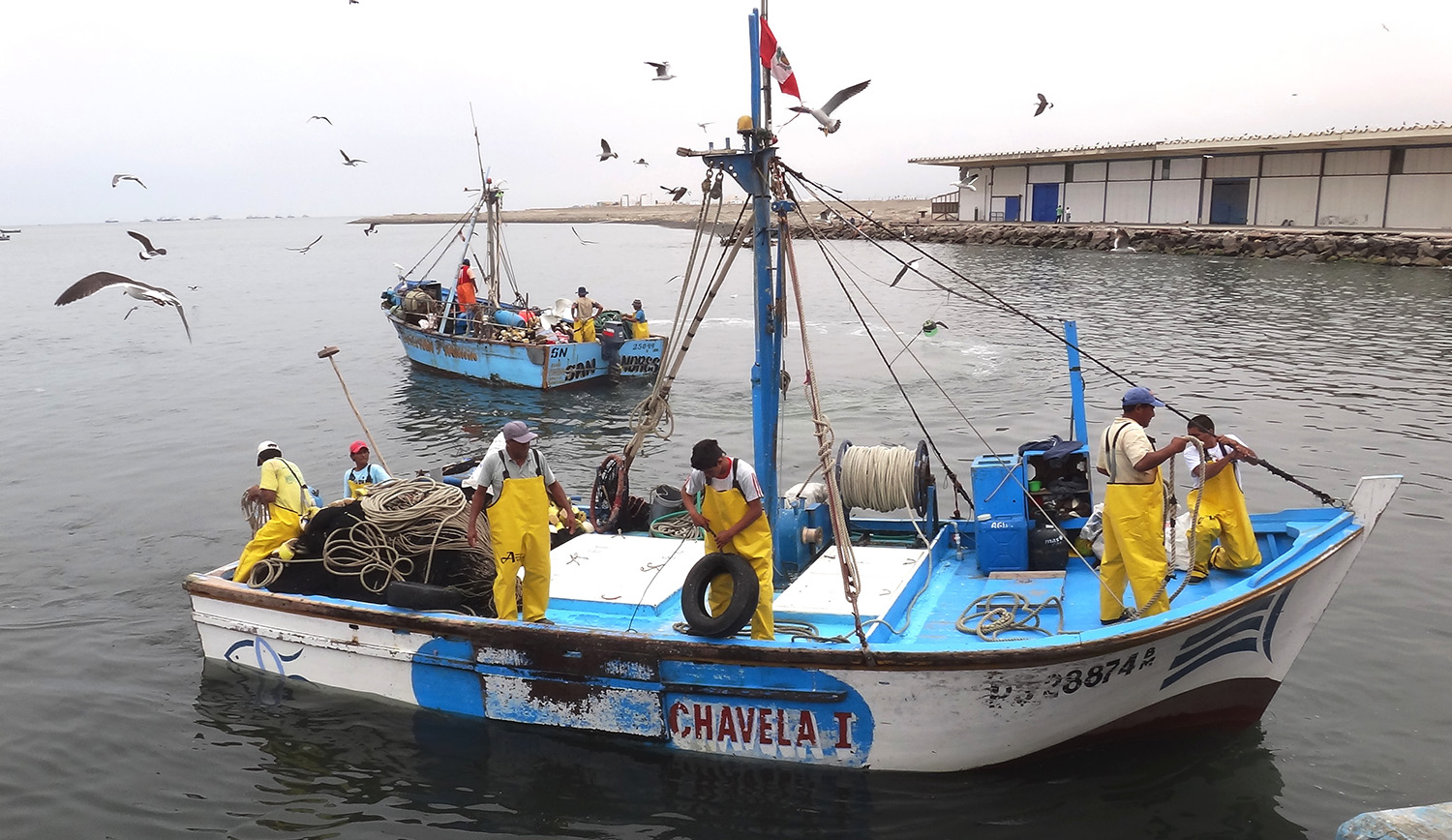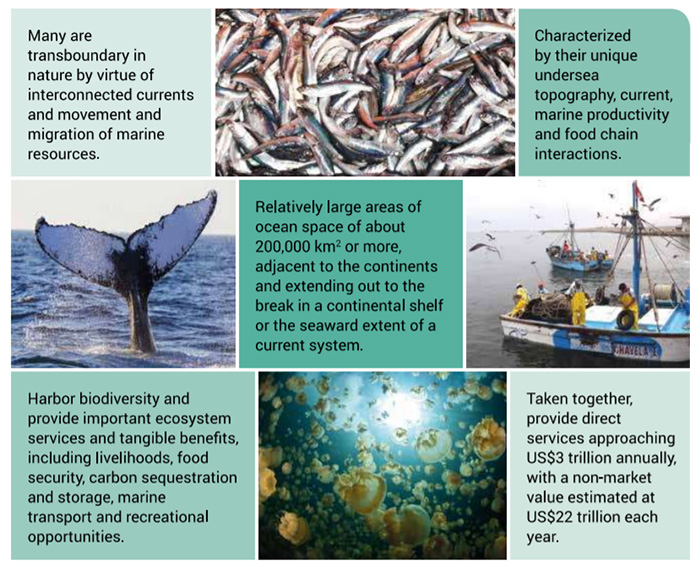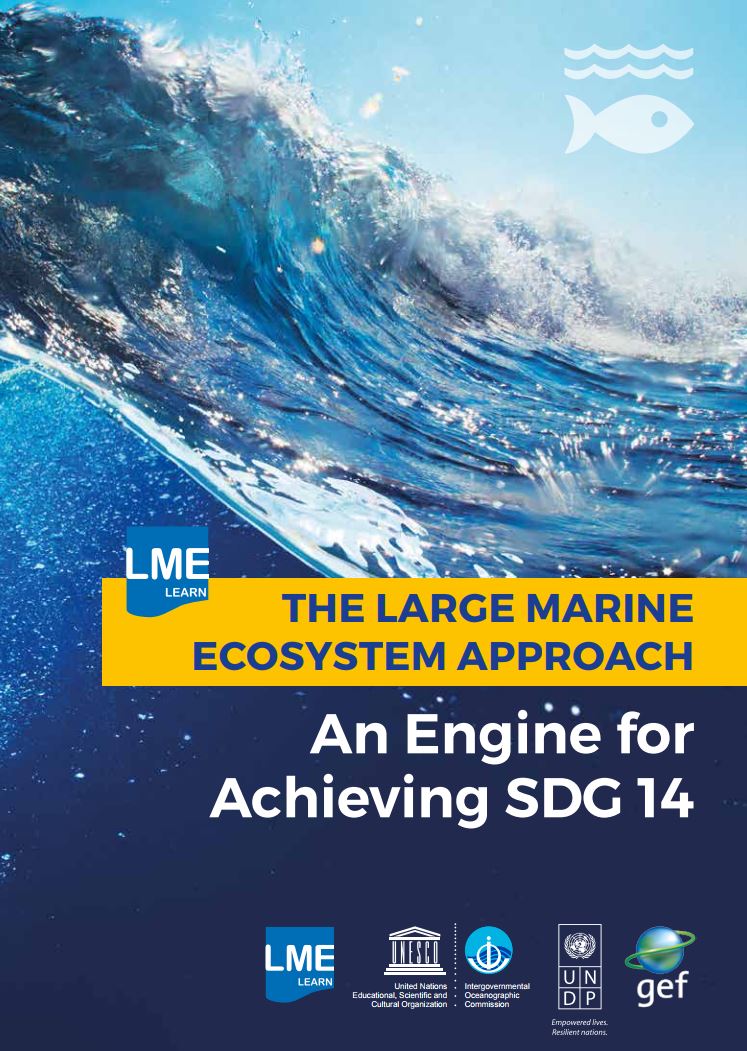What are Large Marine Ecosystems (LMEs)?
 The 66 LMEs are the most highly productive areas of the oceans. They harbor biodiversity and provide important ecosystem services and tangible benefits, including livelihoods, food security (producing about 80 percent of the world’s annual marine wild fisheries catch), shoreline protection, carbon sequestration and storage, and recreational opportunities. LMEs also provide less tangible benefits like spirituality, inspiration, and cultural and aesthetic connection to nature. Taken together, LMEs provide direct services approaching US$3 trillion annually, with a non-market value estimated at $US22 trillion each year.
The 66 LMEs are the most highly productive areas of the oceans. They harbor biodiversity and provide important ecosystem services and tangible benefits, including livelihoods, food security (producing about 80 percent of the world’s annual marine wild fisheries catch), shoreline protection, carbon sequestration and storage, and recreational opportunities. LMEs also provide less tangible benefits like spirituality, inspiration, and cultural and aesthetic connection to nature. Taken together, LMEs provide direct services approaching US$3 trillion annually, with a non-market value estimated at $US22 trillion each year.
These ecosystems are transboundary in nature by virtue of interconnected currents, pollution, and movement and migration of marine living resources. LMEs represent multi-country, ecosystem-based management units for measuring the changing states of these defined ocean spaces, and for taking remedial actions toward the recovery and sustainability of degraded goods and services.




